
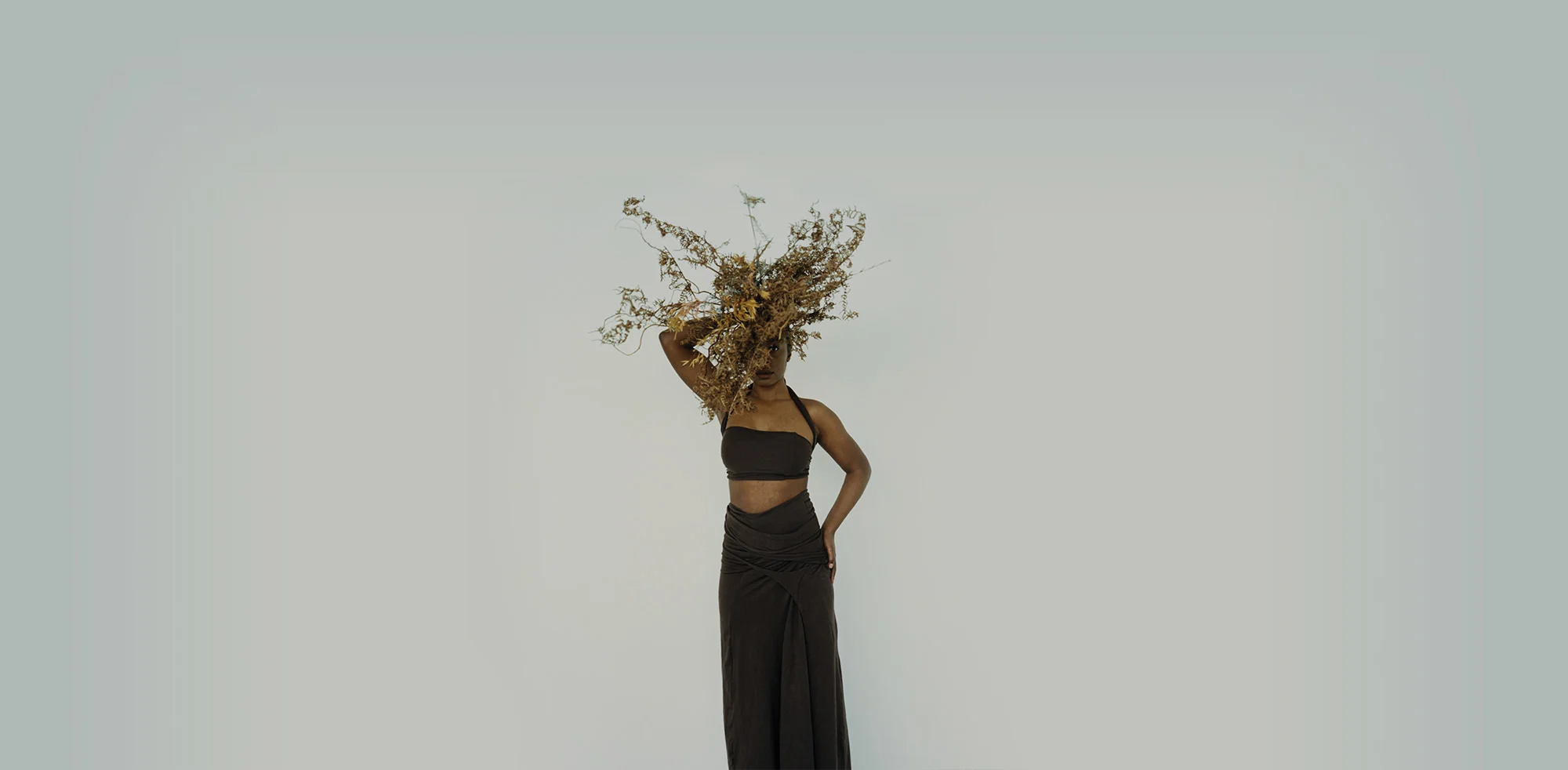
In November 2020, photographer Ronan Mckenzie launched HOME: a north London creative hub encompassing a gallery space, open workspace and library, with a keen focus on championing the work of BIPOC artists. The space is now home to The Self Portrait, an exhibition in collaboration with WePresent that sees 13 Black women photographers present a self-portrait. Kemi Alemoru speaks to Ronan Mckenzie and the photographers about HOME and the themes of self-appreciation and self-representation that are present within it.
During the 2020 lockdown, with so much time spent indoors, photographer Ronan Mckenzie began taking a series of self-portraits, documenting both herself and her partner. She noticed many others – friends and fellow photographers who usually remained unseen – turning their lenses on themselves.
Ronan reached out to 12 other artists she admired, and asked them to take self-portraits for an exhibition in her new gallery and creative space, HOME. Her own process of self-documentation and the openness of the artists involved got Ronan thinking about why it is that we are so rarely afforded the opportunity of self-representation. Why do we so rarely see behind the lenses of the Black women who are often at the forefront of creating valuable archives documenting our lives? The Self Portrait became a space for the photographers to celebrate and support one another in what was, for many of them, a first – the act of photographing themselves.
Ronan’s own photography has made its mark on the fashion industry for its intimacy and her knack for expertly capturing the personality and character of her subjects. Naturally, this exhibit invites viewers’ insight into the character of new and established Black women artists like herself. In partnership with WePresent, the series entitled The Self Portrait will be shown in the space from May 13 to June 27. The intergenerational show explores the power of self-representation for a demographic that is often stereotyped, fetishized and imitated by the world at large.
Situated in north London, the space, which opened its doors physically in December, boasts a library, creative workspace, and of course a gallery space to exhibit the work of BIPOC creatives. “There are hardly any Black-owned art spaces in London,” Ronan explains over video call. “And it’s important to invest in ourselves, so I’m putting my money where my mouth is.” Motivated to use her resources and skills to foster solidarity among London’s diverse creative scene, she hopes her free-to-use space can be a hub where people can come together and feel at peace. “It was important to create a space where people can just be, somewhere that encourages creativity and artistic practice,” she adds.
Ronan Mckenzie
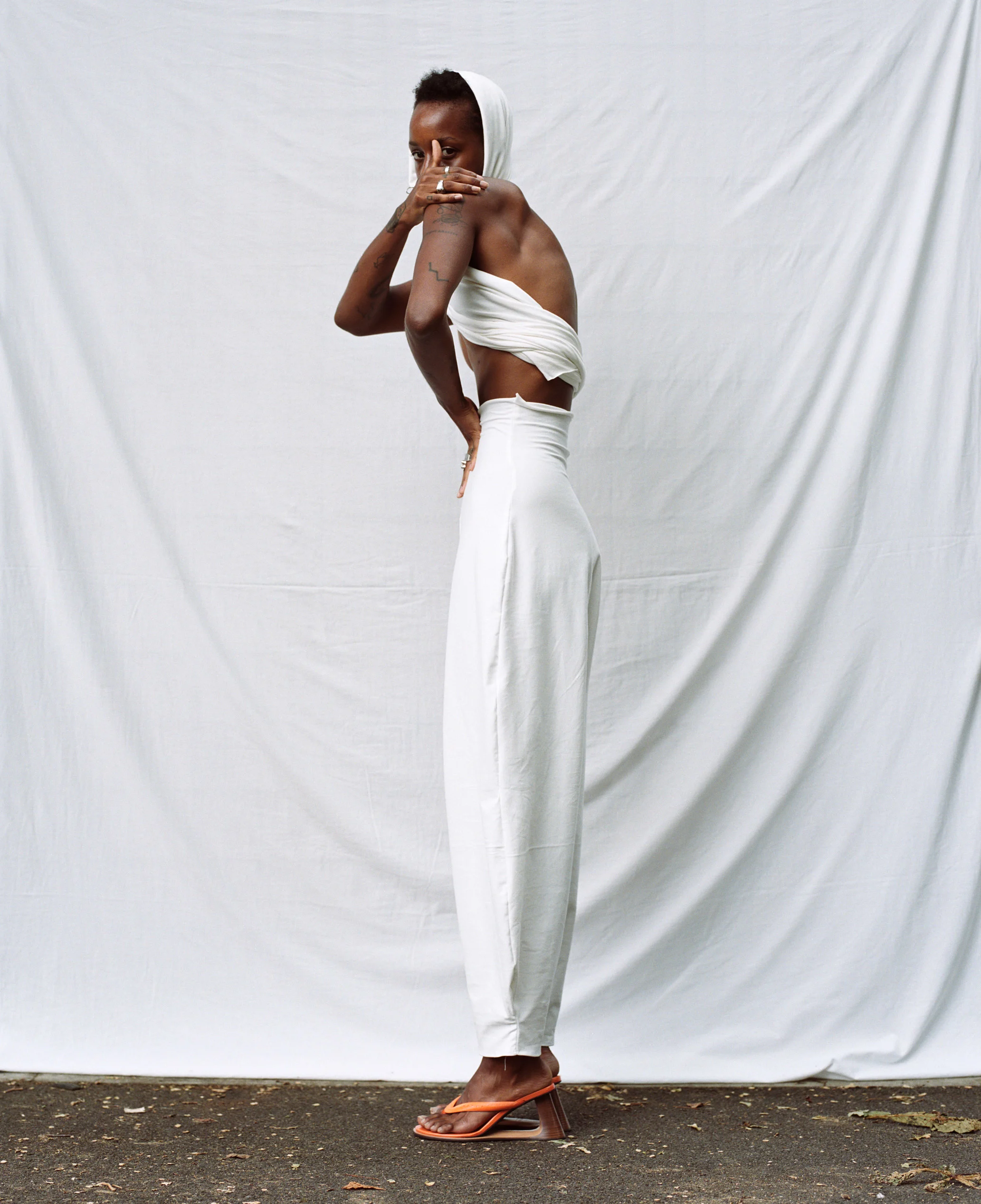
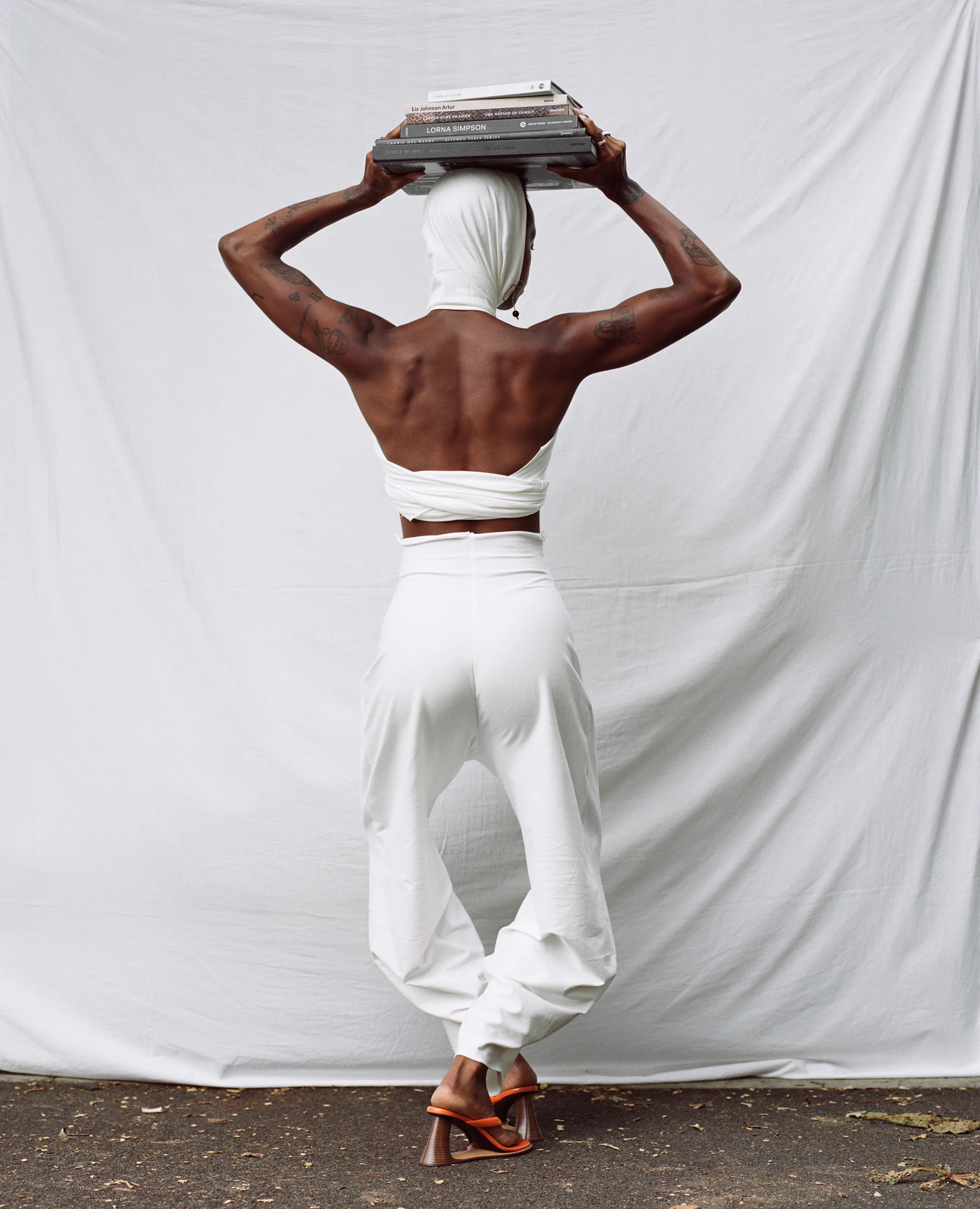

Exhibitions that celebrate and focus solely on artists of color are generally hard to come by. In recent years, however, we have seen an increasing number of blockbuster, all-Black shows in traditional, historic gallery settings. However, in their eagerness to showcase as many Black artists as possible, to remedy the rarity of seeing artists from marginalized communities featured in prestigious institutions, there’s a danger that the lack of space detracts from each artists’ individuality. Visitors don’t get to delve into the topic of their work with sufficient depth when the link between works is race as opposed to a shared discipline, artistic vision or ideology. “You’ve got to start with the work and then the rest comes naturally, but often when Black artists are thrown together you start with race how all the works sit together. So sometimes it doesn't fit,” she explains. But at HOME, race “will always be an element that contextualizes the work,” so Ronan says the strength in having ownership within arts spaces is that there’s room to ask further questions. “What do say about power, or the amount of care we give to others and not ourselves?”
She’s excited for people to now see the results of a project that has pushed many of these photographers out of their comfort zones. “Seeing all of these works sit together is really special. When do you ever see something so personal and powerful? When do we get to see so many portraits of Black women artists?” Ronan also contributed to the show, choosing to exhibit a triptych of her own images that illustrate her belief in “plurality in expression.” One of the images shows her balancing the photo books of Black women photographers she admires – a visual representation of other artists who have inspired her, creatively. Other photographers in the show chose images that would honor themes such as tradition or domesticity. We speak to the artists to see what they learned by stepping from behind the camera and presenting themselves to the world.
Adama Jalloh
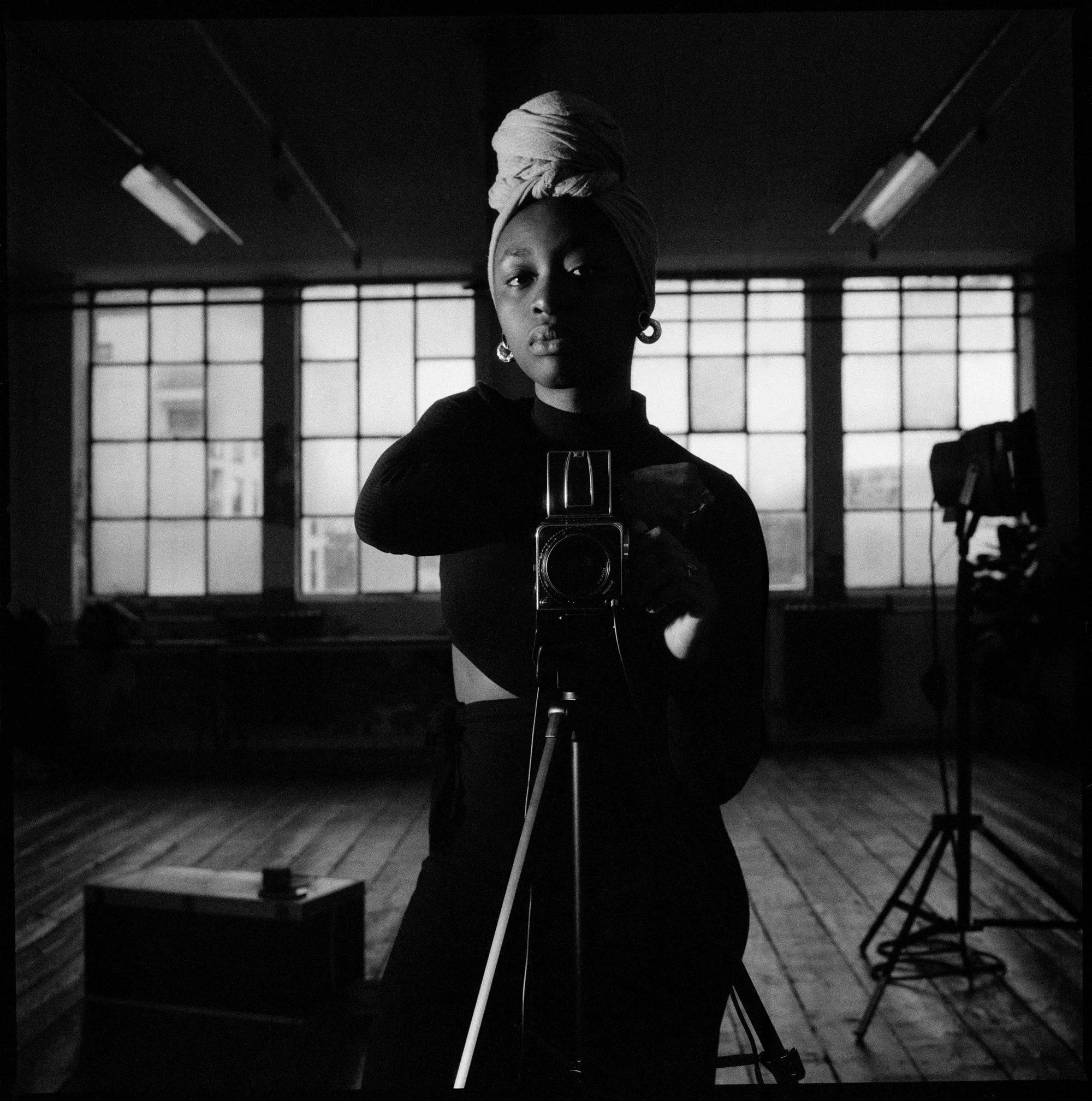
Adama Jalloh specializes in portrait and documentary photography. Her mostly monochrome images are vivid and evocative snapshots of British POC everyday life.
“Even though my camera has been a great way for me to document and tell stories, it’s also been something that I’ve often hidden behind.
Choosing to photograph myself in front of a mirror meant I really had to take the time to look at myself, open up conversations and discover parts of myself that I like. Photographing myself made me challenge thoughts I’ve had that have led me to exclude myself from things in the past. To be honest I’m still navigating, and how I see myself has been changing and probably will continue to shift over time.”
Joy Gregory



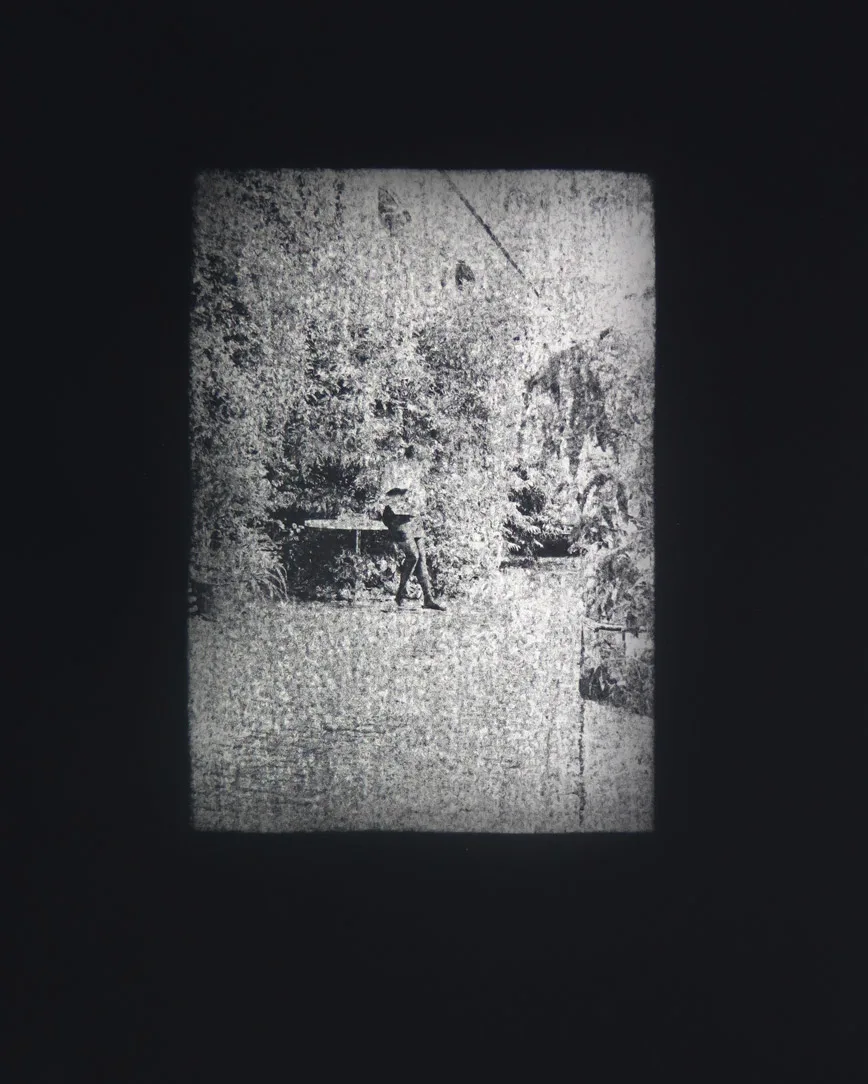

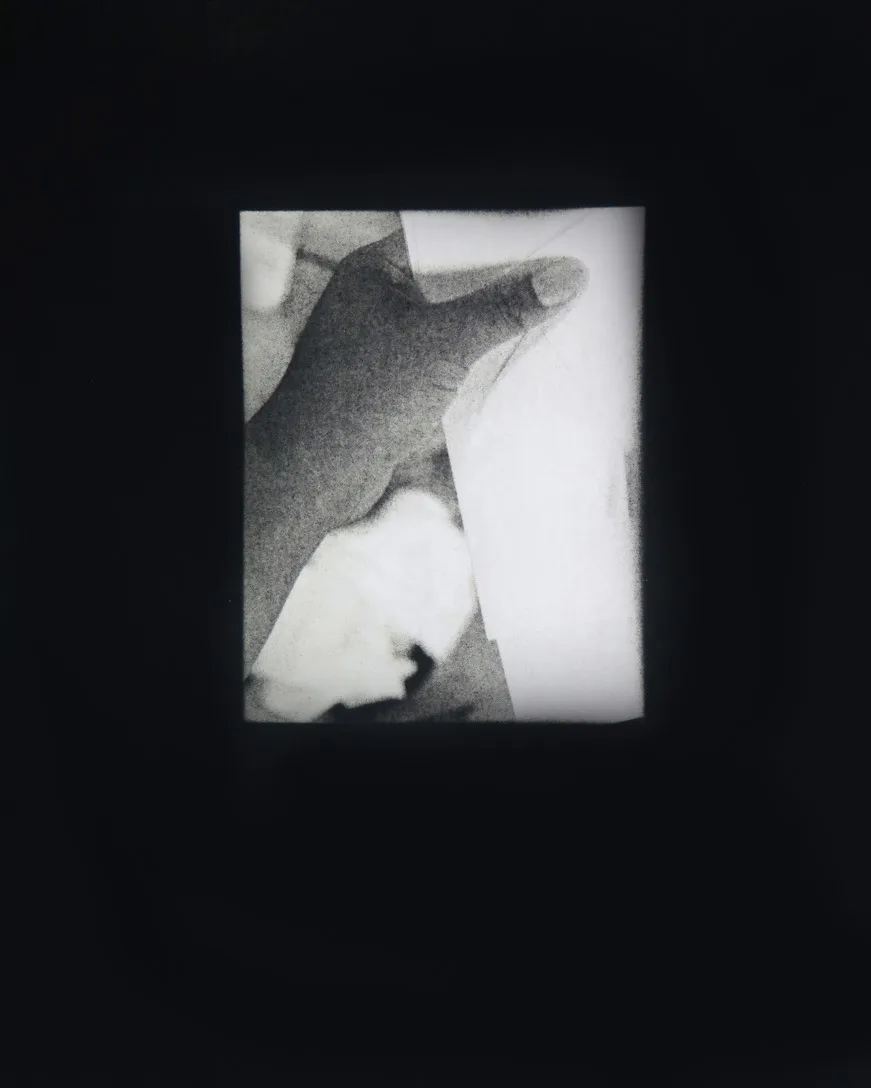

Exploring cultural identity since the 80s, this social commentator’s work spans photography, moving image and installation to unpack the world she sees.
“I see myself as an individual who tries to live her life as best she can, given the boundaries of other people’s expectations.
was created such a long time ago . It came out of the Self-portrait Photography Group I started while working as the Education Coordinator at Photofusion in Brixton. The group was called ‘Creating the Subject’ and included some fantastic people such as Gina Glover and Rosy Martin. It was around the time that surveillance cameras were being introduced into the public realm in the UK, so it was about surveillance and the hypervigilance that one performs when constantly ‘othered.’”
Christina Ebenezer

Specializing in fashion photography, Christina Ebenezer has photographed the likes of Michaela Coel for GQ, and she lists brands such as Paul Smith among her creative partners.
“It's always much easier giving directions to a subject when trying to recreate the image in my mind. But when I became that subject, I was forced to let go of the past constructs I had formed about myself and capture who I was at that moment in time. It was no easy task.
Regardless of the connotations that are often assumed when it comes to Black women, I see myself as a human first and foremost who wears their skin color and gender with pride. I’m remembering mostly to see myself and not try and make myself smaller in order to lift up others.”
Denisha Anderson


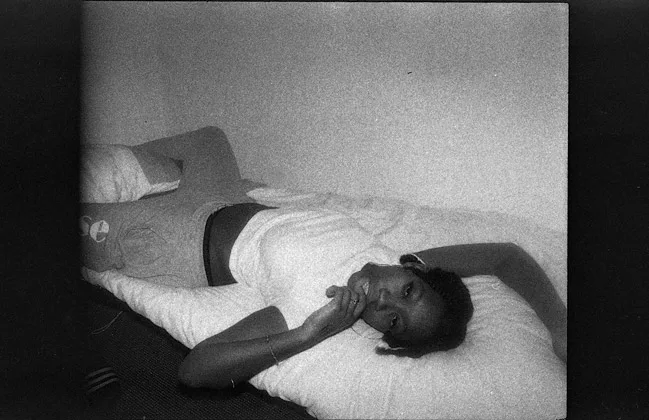

This South London-based photographer and director counts Spike Lee, Daniel Mulloy and Joost Vandebrug as her creative tutors, who inspired her to develop her own unique lens, through which she analyzes identity, gender and race.
“I used Polaroids as it’s an instant moment frozen there and then, no edits. I thought: how do you select pictures that represent yourself? Can a person be summed up? I was feeling a lot of internal pressure, but I felt really comfortable being nude. When naked I feel good. I was in a space of mental chaos and physical comfort.
With all this going on in my little noggin, I realized I’ve been explaining myself for years to teachers, colleagues, friends and family in many different ways. Those days are done. Perception is individual, I will leave it to the viewer to pass their own judgement. I feel no need to correct them or insist upon a certain narrative, as the only idea of me that matters is my own. Turning the lens on myself made me see I’m enough for me. I’m beautiful.”
Olivia Lifungula

Congo-born, Belgium-raised Olivia Lifungula’s works, which explore intimacy, beauty and the construction of Black femininity in the arts and media, have been featured in Vogue Italia and Harper’s Bazaar UK.
“It’s ironic because so much of my work focuses on Black women taking up space and shining brightly, while I certainly given myself the same courtesy. I have often felt immense angst towards my body. Self-acceptance doesn’t come naturally to me.
As a kid I was fascinated by romance, and it was always disappointing to see nearly every love interest in films that shaped so much of my vision look nothing like me. I feel called to tell stories where Black women are the main characters: intimate and delicate. I see our beauty, resilience, vulnerability and joy. I love the way we look, talk and exist in this world, and I will forever celebrate that.”
Ejatu Shaw

Inside her photographic world of soft hues, natural hairstyles and nostalgia, this Inside her photographic world of soft hues, natural hairstyles and nostalgia, this multidisciplinary artist spotlights POC communities and individuals in Britain and Sierra Leone. spotlights POC communities and individuals in Britain and Sierra Leone.
“I was in Sierra Leone when this shot was taken. I travelled there in October to go and visit my dad’s grave. Lockdown was implemented when he passed away over there and Islamic funerals happen straight away. Eventually I was able to go over there to really come to terms with what had happened, and I ended up contracting Typhoid fever.
I was hallucinating, hadn’t eaten in days and felt close to death. If anyone was going to capture what was going on with me it would have to be me. I was shaking as I pressed the shutter release, I’m surprised it was even in focus. This moment, I’m empty. I’ve lost my health and my father so I named it Tyvoid Fever. I’m trying to be as true to myself as I can. I aim to one day have a consistent sense of self, no matter who my audience is.”
Tino Chiwariro

Having worked with JW Anderson and Toast, this London College of Communication alumna’s work is instinctive, intimate and born of experiments in the dark room.
“One thing I remember from Zimbabwe, my home country, is that all the women in my family would carry things like water on their heads. Once you balance it, you don’t really feel how heavy the thing you’re carrying is.
The women in my family are very religious, reserved, strong and hard-working and I see that in myself a lot, too. This fixed idea of Black womanhood is the strong Black woman and a part of me is like that – but I’m also vulnerable and feel pain. I don’t always have that thick skin that is expected of people. Having to always be that person is exhausting. This exhibition has allowed me to project that balance.”
Christina Nwabugo

Zooming in on the relationship between people, culture and nature, British-Nigerian photographer and director Christina Nwabugo is also laser-focused on documenting authentic narratives of the underrepresented. She’s previously held positions at Getty Images and has collaborated with Magnum, Channel 4 and Hunger magazine.
“Deconstructing the gaze upon Black womanhood has been a collective and long journey. I believe we feel the pressures of teaching society how to view us – an act which is rather exhausting. I take responsibility for how I see myself. I truly believe surrounding yourself with sisters increases your self-awareness. Black women community groups allow us to dive into our super power, from loving our hair texture to our complexion.
This image of myself continues my narrative of nature being symbiotic with our anatomy. The photograph was taken in my back garden and I wanted to keep my home private, so I used a yellow backdrop to signify happiness.”
Amaal Said

Amaal Said is a Danish-born Somali photographer and poet based in London. Her photographs have been featured in Vogue, the Guardian and the New Yorker. Her work captures beauty as a vehicle for healing and a declaration of love for her and her community.
“I’m a multitude of things. That hasn’t always been acceptable or made sense to the people around me. I delve into different practices, and if one can’t contain an idea, I take that idea elsewhere. I’m a Black Muslim woman, also Somali. I’m a photographer, a poet.
Taking pictures of myself was how I approached photography. I played around in front of the camera, experimented with hijab styles and makeup. Those early sessions felt playful. There’s been a lot of sadness and change in the world, and it hasn’t made sense to stop and look at myself . My face has changed slightly, I’ve gained weight and lost it, but I’ve survived it all. The portrait shows that.”
Lucie Rox
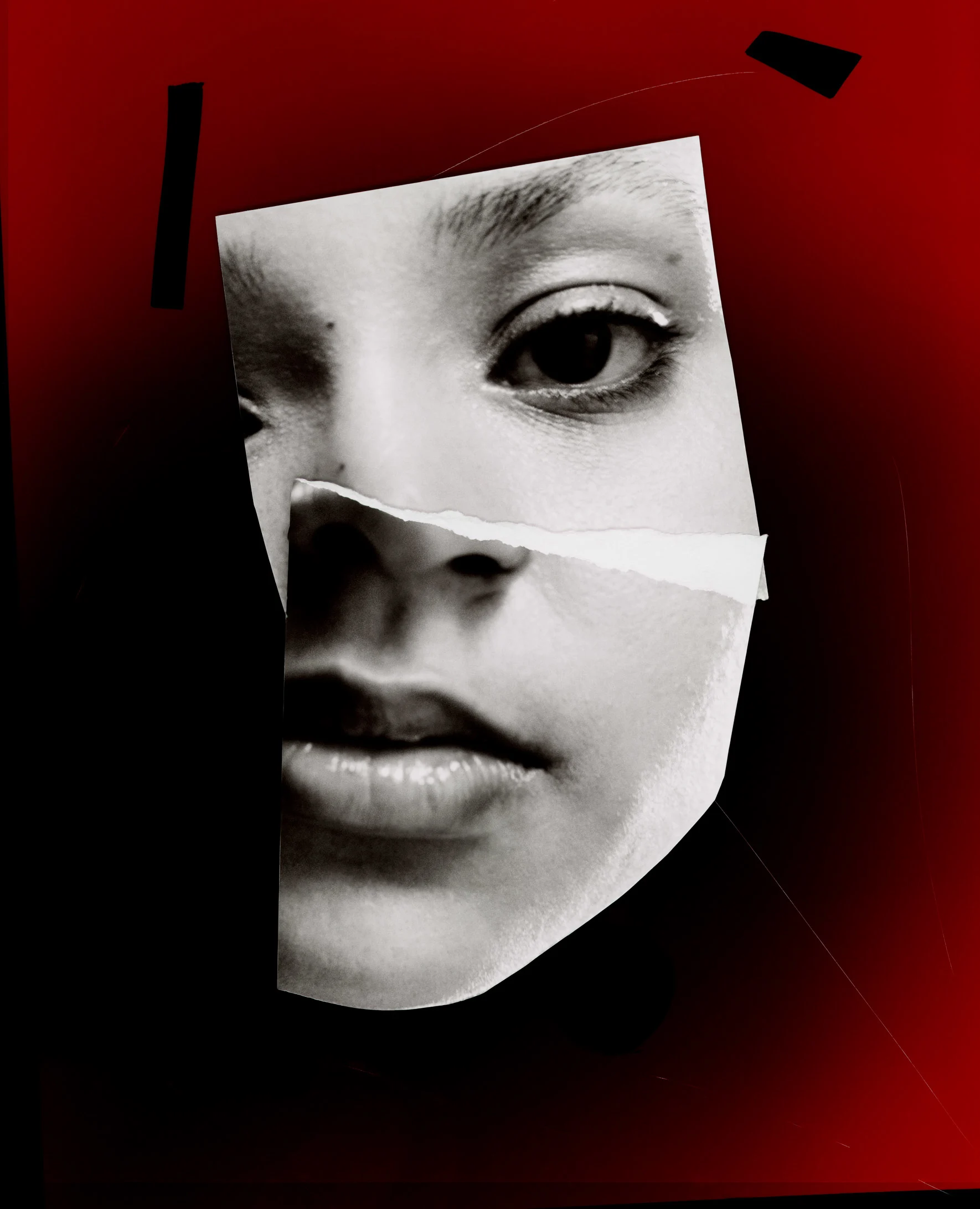
Born in the south of France, photographer Lucie Rox grew up near Brittany before studying Literature and Arts in Paris. She now lives and works between London and Paris. Her commercial and editorial clients have included British Vogue, Dazed and i-D.
“There’s a scientific concept called allotropy, which is the property of some chemical elements to exist in two or more different forms, in the same physical state. To me, it's very interesting to see myself through this prism, as it allows room for being one thing and also multiple things at the same time. I’m a combination of multiple identities coexisting: Black, biracial, woman of Congolese descent, from the diaspora, French, living in the UK...
I’ve been playing with collages and darkroom experimentation to illustrate this idea. Collaging was also a way of overcoming the discomfort with my own image, being able to rip it up and create it all again in a way that I could feel closer to how I see myself.”
Tori Taiwo

Diverting away from her usual technicolor shots, Tori Taiwo, who has formerly spoken about periods of her life where she was homeless, uses this project to explore her selfhood in a domestic setting.
“I am a Black creative girl living in London by herself. I try to photograph myself twice a year minimum and have done for the past three years. I dug deep into me. I did three different photoshoots: some in the bath, some in my living room. I’m usually loud and expressive with my hair and my photos have color, color, color – but I really wanted to strip it all the way back. It feels like it speaks for itself. It allowed me to think about what I want to say as a voice in a gallery – I’ve never had that space before.”
Jennie Baptiste
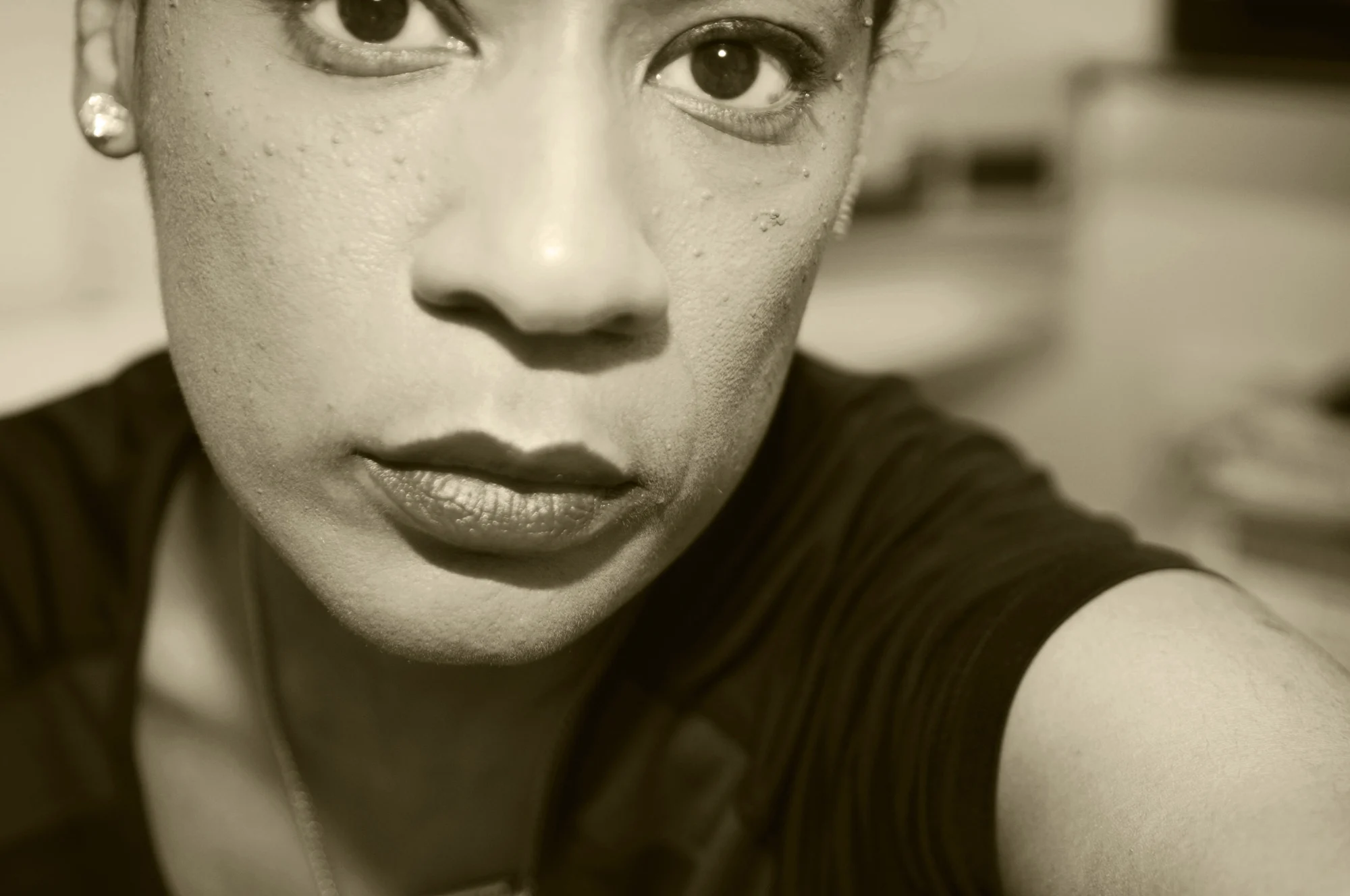
Having exhibited her works since the 90s, Jennie Baptiste has created portraits of greats like Nas, Jay Z, Biggie, and Estelle, and is now turning the lens on herself.
“My vision has always been that you can be whoever you want to be in this world…I am not your stereotype. It is that self-belief that has kept me going even in the tough times. But the self-portrait was a challenge! Originally I had planned to shoot myself in a studio, but that went out of the window when lockdown was extended. I knew that by shooting myself I would have to overcome how I perceived myself to be. I was not sure I wanted to go there. That is when I told myself, ‘There is your challenge, do it.’”

